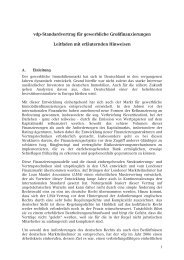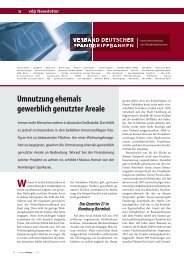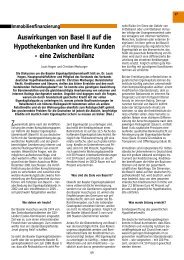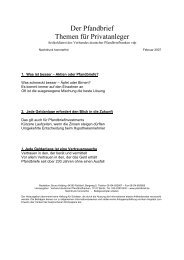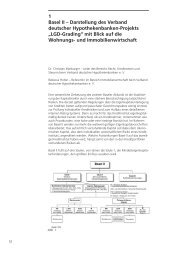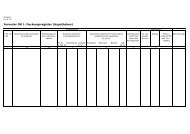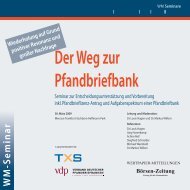The Pfandbrief 2011 | 2012
The Pfandbrief 2011 | 2012
The Pfandbrief 2011 | 2012
Create successful ePaper yourself
Turn your PDF publications into a flip-book with our unique Google optimized e-Paper software.
Driven by such healthy fundamentals, demand for retail premises in prime locations by, above<br />
all, successful international textile chains has been consistently high in recent years. Moreover,<br />
these retailers will continue to pursue their expansion objectives. Germany offers a wide range<br />
of opportunities for expansion thanks to the enlarged downtown locations, an abundance of<br />
attractive shopping centers and the country’s decentralized settlement pattern.<br />
<strong>The</strong> short supply of highly sought-after A1 downtown locations and the persistently strong<br />
demand for such premises leads to steady – or even a slight increase in – prime rents. Outside<br />
of such top locations, however, it is relatively difficult to re-let or to lower the vacancy rate,<br />
which puts pressure on rents. With new projects in the pipeline, the trend of downtown shopping<br />
centers seems to be unbroken.<br />
Already in 2010, safety-minded investor groups in particular were again focusing more<br />
strongly on the German retail property market, and the volume of transactions involving retail<br />
properties even exceeded that for offices. But investors are no longer concentrating exclusively<br />
on absolute core properties; they are also looking for real estate in good locations and<br />
with shorter lease terms or low vacancy levels. This positive trend is likely to continue in <strong>2011</strong>,<br />
which should lead to yields falling further in the short to medium term.<br />
Hotels<br />
<strong>The</strong> hotel sector is highly dependent on the general economic setting. For this reason, it suffered<br />
a severe slump also in Germany during the financial and economic crisis. Particularly the<br />
higher class hotel segment and airport hotels were negatively impacted, above all, by the fall<br />
in foreign guest numbers and cutbacks in business travel. Nevertheless, it has to be stressed<br />
that the decline in business was less pronounced for hotels in Germany than in other European<br />
countries.<br />
Due to the prevalence of small and medium-sized enterprises in Germany and the fact that<br />
German trade and industry is firmly rooted in the eurozone, paired with the value added tax<br />
decrease for the hotel sector from 19% to 7%, German hotels in 2010 benefited to an aboveaverage<br />
extent from the economic upturn. Overall, more overnight stays were recorded than<br />
at any time since German reunification. Above all, the number of foreign guests and business<br />
travelers rose again perceptibly. Despite the increase in accommodation available, this had<br />
a positive effect on bed occupancy rates, which rose by 5.8% for Germany as a whole. This<br />
upbeat development was observed for both the average room rate (ARR) and the average revenue<br />
per available room (RevPAR). <strong>The</strong> ARR was up by 12.6 % and the RevPAR by 19.1%; with<br />
that, the RevPAR was well above the average for Europe (+9.9%).<br />
This positive trend attracted investors back to the German hotel market, especially in the<br />
fourth quarter of 2010. Compared with 2009, the transaction volume in 2010 almost doubled,<br />
with capital-strong investors and self users predominating. Foreign investors accounted for<br />
roughly 50% of investment activity.<br />
71




